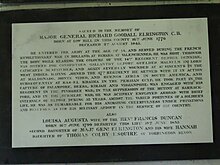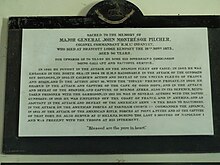St John the Baptist, White Ladies Aston
[1] It is a building of Norman origin, dating from 1204 when Robert de Everay made a gift of two palfreys to the Bishop of Worcester.
This action won Robert the right to present a candidate for the office of vicar to the parish of Aston Episcopi and it was understood he intended to build a stone church.
The 17th century, during the time of the English Civil War, there was the growth of extreme religious groups which caused problems in the country, even in the Church of John the Baptist.
In 1652 the curate, John Moseley was ejected from the church over anti Quaker sermons; in 1656 Robert Brown, a Fifth Monarchy Man caused trouble in the congregation and in 1661 this curate was ejected from the church over pro Commonwealth sermons at the time of the Restoration of King Charles II.
A large donation, which covered much of the cost of the repair, was made by Mr. Perrins of Worcester to honour a longstanding Family Debt of Gratitude.
Mr. Perrin's grandfather who owned a chemist's shop, made up an Indian Sauce to a recipe left by Lord Sandys of Ombersley's housekeeper in 1812.
An annual renewal of the offer became a tradition between the Perrins and Sherwood families, but it is claimed that it has been repeatedly declined until the present occasion.
[4] The church lies within a secluded churchyard to the north of the village approached via a yew tree lined path.
The western wooden tower has an elegant splay-footed spire, the main timbers of which are as old as the shipwrecked Mary Rose, i.e. circa 1545.
The west wall of the nave was rebuilt in 1861 with a pair of widely spaced lancets and a small quatrefoil window above.
Individuals from White Ladies Aston were involved in these areas of action and witnessed important events in the growth of the British Empire.
Richard Goodall Elrington was born on 16 June 1776 at Low Hill House, White Ladies Aston.
A Memorial Plaque has been erected in the North Aisle of the Church to record the names of villagers in White Ladies Aston who gave their lives in the Great War.
On 7 July, Corporal David Gould, aged 31, was killed in action when his 3rd Battalion of the Worcestershire Regiment attacked the German stronghold of the Leipzig Salient on the Thiepval Ridge in the region of the Somme.
David was the son of William and Emma Gould having an older sister, Margaret, and a younger brother, Harry.
On 3 September, Henry John Page, who was linked to the village and whose name appears in the churchyard, was killed in action in Northern France, aged 22.
His family lived at Aston Hall and on 30 October, William Henry Shuck, aged 30, was killed in Beirut.

